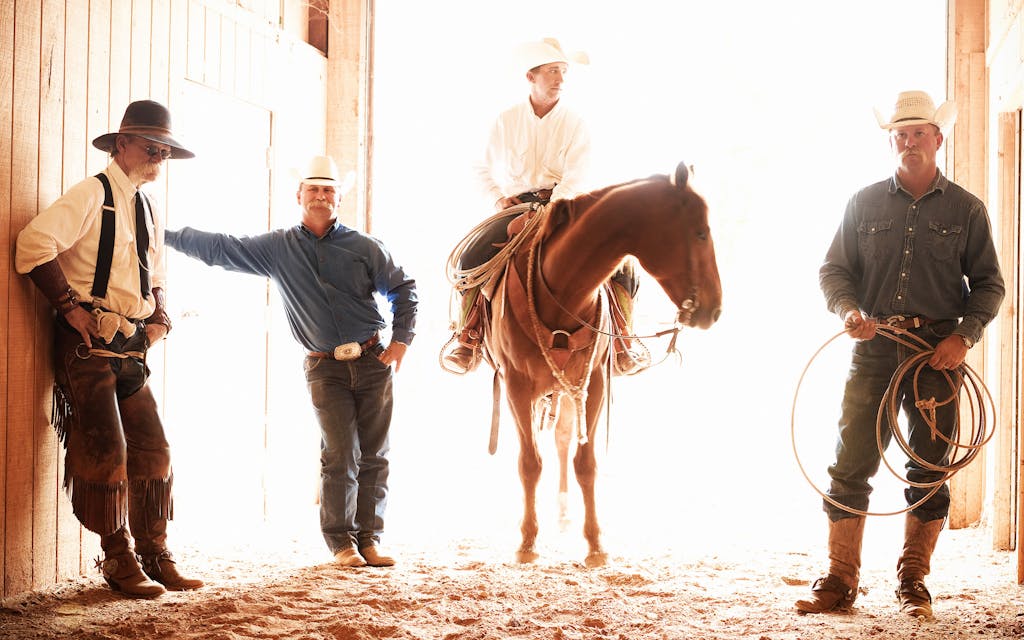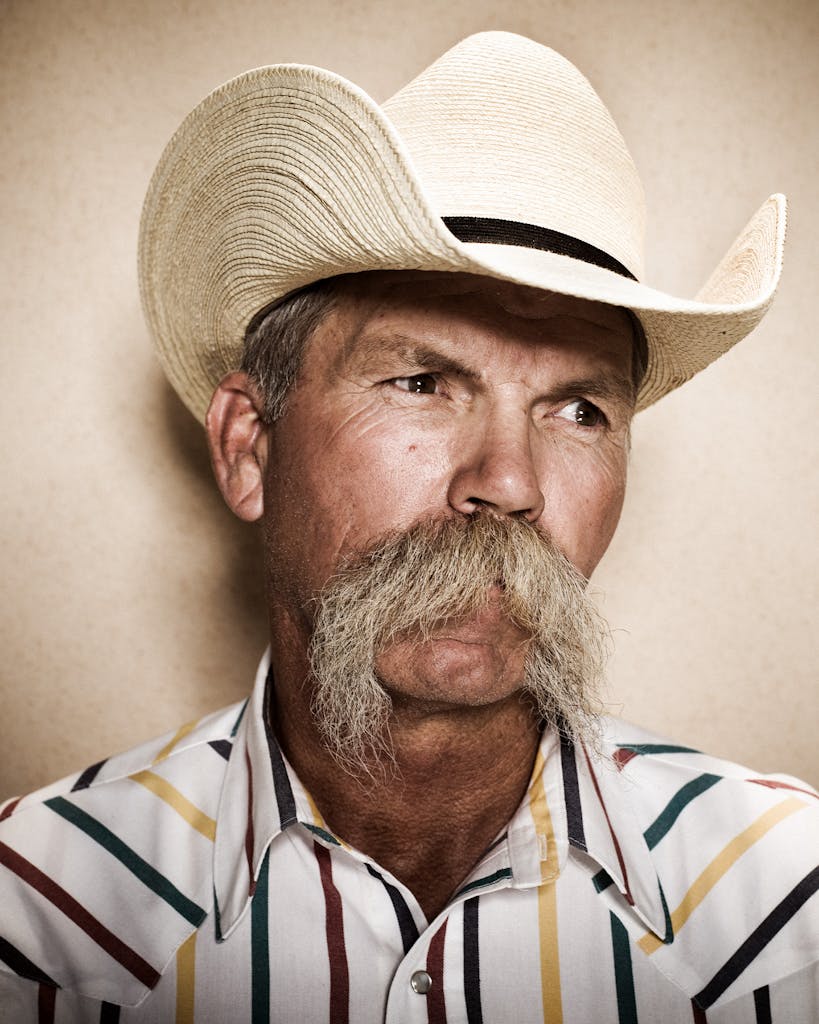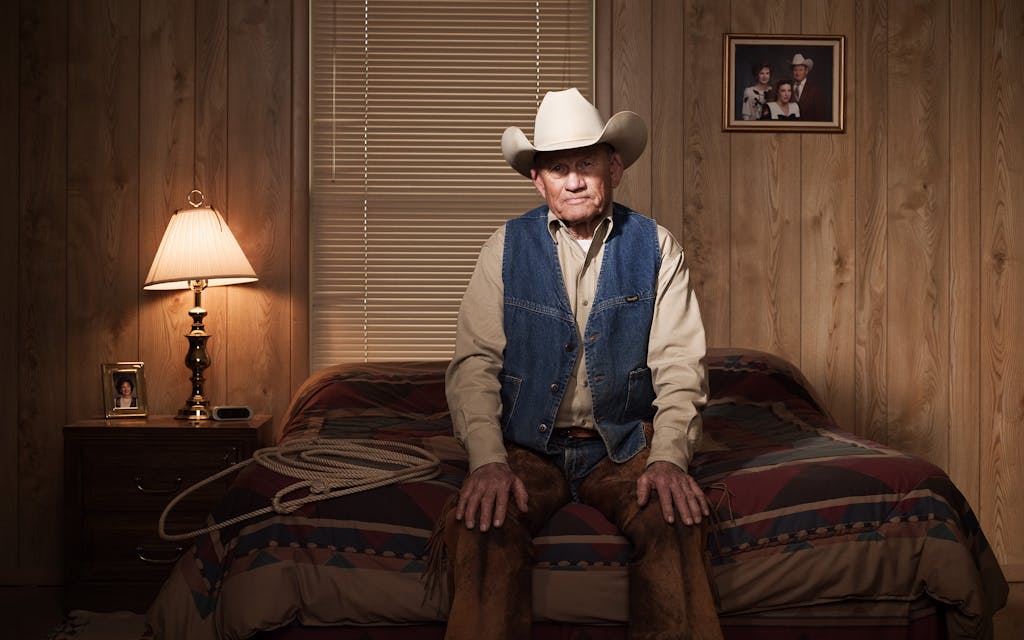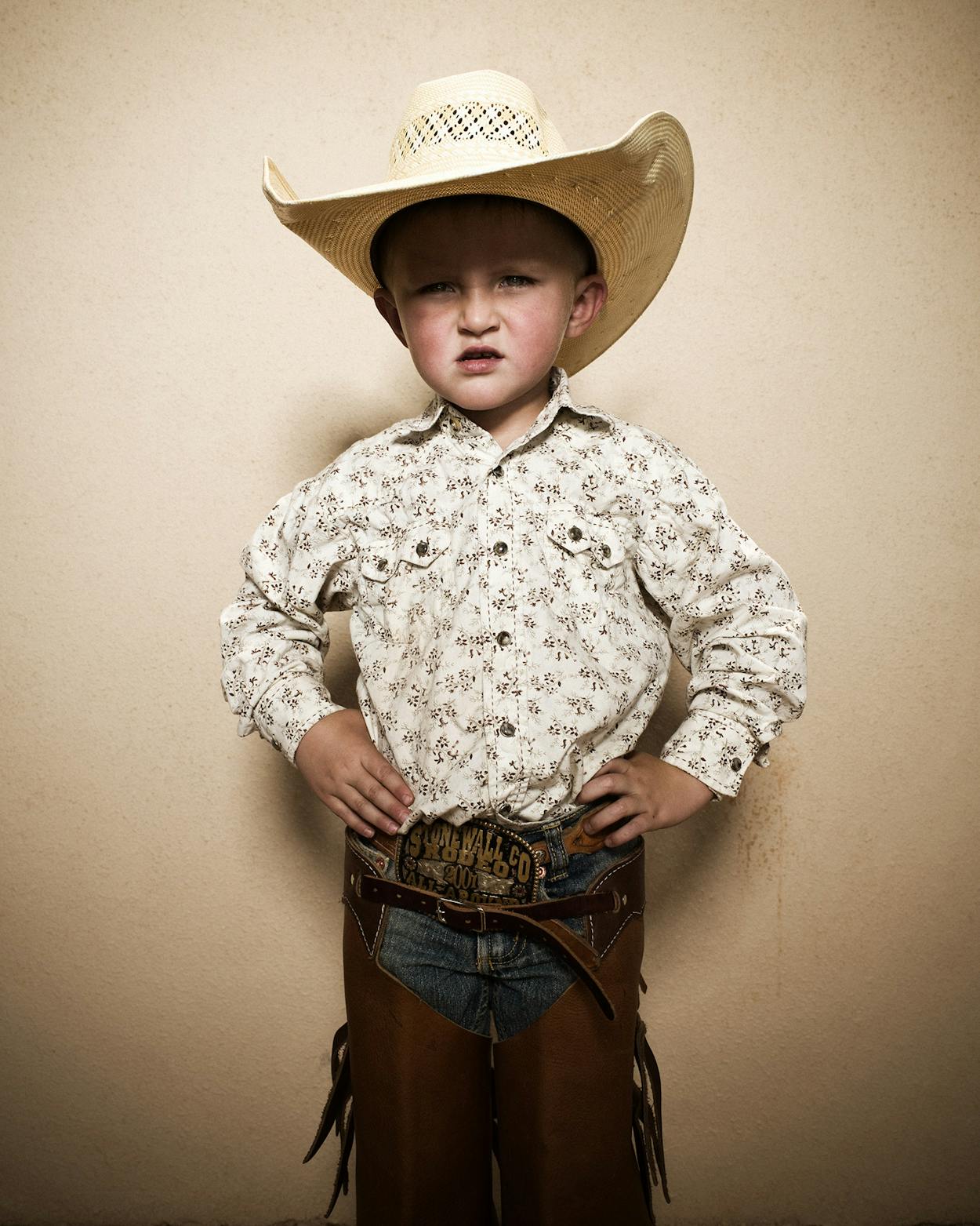There was a time when the word “cowboy” evoked respect, even envy. In ranching circles it was an honorable label that had to be earned. One proved himself worthy of it through character, deed, and skill. Many a wannabe ranch hand—like me—never acquired it. Yet regrettably, in recent times “cowboy” has come to denote rashness, a shoot-from-the-hip readiness to use force without regard to consequences—in short, a total reversal of the word’s original and true meaning.
Though instances of this negative usage have been around for some time, they have increased dramatically over the past seven years, especially in a political context. While this is not the fault of George W. Bush, it has coincided with his time as president. Whether you like the man or not, you cannot deny that his image has taken a beating lately. I am here neither to condone nor to protest that beating. What concerns me is the collateral damage to the word “cowboy.”
From the beginning of his first term, Bush was referred to as a cowboy, but before September 11, the word was used primarily because he came from Texas, wore boots, vacationed on a ranch, and according to some critics, affected a certain swagger. After September 11, the invasions of Afghanistan and Iraq, and Bush’s comment that he wanted Osama bin Laden “dead or alive,” calling the president a cowboy took on other shades of meaning. Soon, critics of his foreign policy began to speak of “cowboy diplomacy,” a phrase first used in 1983 by Betty Friedan to describe Ronald Reagan’s invasion of Grenada. By the time this year’s presidential campaign rolled around, Hillary Clinton was regularly lambasting Bush for being a “cowboy.” The word had officially become a political epithet.
Will this usage fade when Bush leaves office? It’s unlikely. During this campaign season, it has routinely been employed as effective shorthand, suggesting that it may be here to stay. The use of the word in a derogatory sense goes beyond Bush. Late last year, Nebraska senator Chuck Hagel used it against Clinton herself. Criticizing her for rejecting calls for direct talks with Iran over its nuclear program, Hagel said she and others were talking “like cowboys, with the lowest common denominator being ‘I can be tougher than you, I’ll go to war before you.’ ” Similarly, when asked in May about Clinton’s aggressive stance toward Iran, Barack Obama remarked that “we’re shifting from the sort of cowboy diplomacy . . . that we’ve seen out of George Bush.”
“Cowboy” no longer refers to a specific person or line of work but a style or way of doing things. It is now as much an adjective as it is a noun, as in this usage by Time correspondent Charles Krauthammer: “America is heartily disdained by its coddled and controlled European cousins for its cowboy capitalism.” Krauthammer was making the argument that a freewheeling economy is what has made our country strong, but the usage still would have seemed odd to a working ranch hand.
The real cowboy has somehow been lost in all the reckless rhetoric that uses his name in vain. It may be too late to save his reputation from the sneers of the pundits and politicians, but let us at least try to present some of the truth about who he is and what he does.
To begin with, he is a working man, having much in common with millions employed in other occupations, but different in the specifics of his profession. As writer John Erickson has observed, the cowboy is defined by the work he does. That work has to do with domestic animals, specifically cattle, though a good hand with horses and sheep may also qualify for the title.
To call a man a cowboy tells you what he does for a living, but it does not tell you about him as a person. He may be gentle, or he may be rough. He may have a college degree, or he may have trouble reading a newspaper. He may be in church every Sunday, or he may spend the Sabbath getting past a hangover. A cowboy is an individual—tall, short, thin, heavy, loud, quiet, or none of the above.
His job developed out of the vaquero tradition that migrated north from Mexico in the early 1700’s. Working methods and tools of the trade evolved from those favored by Mexican herders on horseback. In South Texas today, the terms “cowboy” and “vaquero” are often used interchangeably, though the true vaquero is Hispanic. In the mountain states of the West, the word is “buckaroo,” an Anglo corruption of “vaquero.”
But cowboying is no regular profession, like bricklaying or accounting. The cowboy is an integral part of the American myth, a symbol of self-reliance and rugged individualism, a descendant of Sir Walter Scott’s knights of old. Of course, this image of a wild but selfless defender of righteousness and justice is just as inaccurate as more-negative depictions. It began with penny-dreadful pulp magazines of the late 1800’s and was augmented by Hollywood western action films, beginning with The Great Train Robbery (1903) and continuing through the spaghetti western invasion of the sixties and seventies. In most of these he tended to be seven feet tall and quick on the trigger.
By contrast, the first western novel widely accepted as literature, Owen Wister’s The Virginian (1904), depicted the cowboy as quiet and contemplative, slow to take action and regretful about it afterward. A boisterous group in town for a spree immediately settles down upon learning that they are disturbing a sick woman. The hero meets the villain in the street only when honor leaves him no other option. Wister’s cowboy lived by an unwritten but widely accepted code of conduct that, in general, has guided real cowboys through the generations.
I grew up in a cowboy world. My father, Buck Kelton, was foreman of the large McElroy Ranch, in Crane and Upton counties. He never went to the movies, and he never read western novels to find out what cowboys were supposed to be like. They had been part of his heritage since his grandfather brought a string of horses out of East Texas in 1878 and settled in Callahan County, east of Abilene.

My grandfather was born shortly afterward, the oldest of six children. When he was only about ten years old, his father unexpectedly died. Granddad had to drop out of school and work to help support his widowed mother and younger siblings. He cowboyed, broke horses and mules, picked cotton, and did whatever else he could to keep food in the pantry. He remained a cowboy and rancher all his life.
My father was raised in a ranching environment and drew cowboy wages from about age fifteen. He never worried about fitting a mythical cowboy image. He was simply himself, a working cowboy inside and out—emphasis on working. He wore boots not for show but because they were a tool of his horseback trade. He wore a broad-brimmed hat not to look like Tom Mix but to protect his ruddy face from the sun. His hat always had a careless look, the crease crooked, the brim more or less flat. He would never have been hired to pose as a Marlboro cowboy.
J. R. Williams used to draw a daily cartoon called Out Our Way, often featuring cowboys. One showed a wealthy rancher in an old floppy hat, threadbare clothing, and rundown lace-up shoes riding a sleepy plow horse. In the background a hand says, “He told me his secret of success was that every time he saved enough money to look like a cowboy’s s’posed to look, he’d buy another ranch.”
That was my father’s attitude. Utility over vanity, always.
Like most cowboys, he had a weakness for horses. In telling stories from his early years, he could describe in detail the horses the men were riding on a certain day on a particular ranch in 1916 or 1917. He remembered the horses’ names, though he had trouble recalling the names of all the men. He enjoyed trading horses. He would buy one at, say, $100, feed and pamper it for a month or two, sell it for $120, and consider that he had made $20 clear profit. He never figured up the time, travel, and feed he had invested. To do so would have diminished the pleasure he derived from the experience. A devoted horse trader could not afford to add up his true costs or he would not remain in business long.
Part of the misuse of the word “cowboy” comes from the idea that cowboys as a class are quick to fight. This reputation is undeserved. When I was growing up, I only saw two cowboy fistfights. Neither amounted to more than a brief scuffle. Most of the working cowboys I knew would go out of their way to avoid a confrontation with other men, though they would wade right into one with bad horses or ornery cattle. That was their job.
Movie cowboys were usually crack shots, experts with a gun. In the first Hopalong Cassidy film, Hoppy shoots a pistol from a villain’s hand with a six-shooter at long-range while riding pell-mell down a hillside. In reality, the average cowboy rarely handles a gun. Even in earlier times, when gun toting was normal, a cowboy was known to let a pistol rust away in his saddlebag or bedroll, unused and neglected. A classic of cowboy literature is J. Marvin Hunter’s two-volume book The Trail Drivers of Texas, a 1920’s compilation of cowboy reminiscences. In 1,070 pages, there are few mentions of guns and shooting scrapes other than occasional brushes with Indians, usually nonlethal. One of the best cowboys I ever knew tried to shoot a beef in the head with a pistol borrowed from the cook’s chuck box. (He did not have a pistol of his own.) At a range of about six feet, he missed three shots.
Theodore Roosevelt once wrote, “No man traveling through or living in the country need fear molestation from the cowboys.” He said they “treat a stranger with the most whole-souled hospitality” and “what can almost be called a grave courtesy.” This is not to say they could not be rough in playing practical jokes on tenderfeet, as well as on one another. Shooting at a stranger’s feet to make him dance was not unknown. Embarrassing but less dangerous were snipe hunts and “badger under the barrel” stunts. Some of the early first-person accounts of wild and reckless cowboys came from townsfolk who saw them only when they visited the bright lights after payday or at the end of a long trail drive, when it was natural that they would let off steam. The celebration over, they would go back to the everyday routine of hard work in heat, cold, dust, or rain.


My brothers and I were witnesses to what some have called the last generation of full-time horseback cowboys, still working cattle in ways much like those of their grandfathers. The McElroy Ranch had a couple of very large pastures that at roundup time had to be worked in segments, much as in the days of the open range. We often rode out long before daylight and traveled for miles before we reached the pasture where we were to work. Later on, Dad streamlined this operation by building crude but efficient trailers so we could haul the horses. Often this enabled us to work one pasture in the morning and another in the afternoon, doubling our productivity. With Dad, efficiency always trumped tradition.
When I was a boy, the chuck wagon went out twice a year—a week or ten days near the end of summer to brand calves and three to four weeks in late fall or early winter to gather cattle for shipment by rail to the Fort Worth Stockyards. Dad modernized the operation by retiring the traditional mule-drawn wagon and mounting the chuck box on a more mobile flatbed truck. Otherwise, the wagon camp remained much the same as my grandfather had known in his youth.
There were men who made a living as wagon cooks, hiring out by the day to ranches during roundup. Cooks drew slightly higher wages than day-working cowboys. Many had been cowboys themselves, perhaps forced to less strenuous lives by age or injury. The wagon was the outfit’s movable headquarters and the cowboys’ home during roundup. On larger ranches this might stretch into months, even a major part of the year.
Though most cowboys preferred a steady job, some chose day work, dragging their saddles and bedrolls from one roundup to another. This paid more as long as they worked, but often they faced idle periods between jobs.
When Dad was ready to start a roundup, he would drive fifty miles to Midland, his original stomping grounds, and pick up enough day hands to augment the ranch’s full-time cowboys. He was acquainted with most of them, so he knew whom to hire. Our neighbors also pitched in, knowing that when they needed help, the McElroy hands would be there for them. A typical McElroy roundup crew would be about a dozen men, give or take a few.
The cook would arise long before daylight, stir up the coals that remained from the night before, and start preparing breakfast. He would call out when the food was ready. While the cowboys ate, the “jingler” would bring up the horses. One man—most often Dad—would rope them one by one and lead them out for the hands. Every cowboy had a mount of horses designated for him, though usually they belonged to the company. By daylight the men would be in the saddle, sometimes enjoying a brief rodeo, as fresh morning air encouraged frisky horses to pitch.
Dad had rules, never written down but well understood. At the wagon, the working cowboys were the first to eat. Visitors waited until last. You could get a cup of coffee at any time, but you never picked up a plate until the cook hollered, “Chuck!” You never rode another man’s assigned horse without asking his permission.
A cowboy who broke any of these rules was subject to good-natured punishment, as was one who bragged too much or told an outrageous “windy.” For committing a “chaps offense,” he was obliged to lie belly-down across a bedroll and take a few whacks across his back pockets with a pair of leather chaps.
A drive would usually start at one end of a pasture. Dad would string out the riders in a more or less straight line. The distance between them varied according to the size and brushiness of the pasture, but each man was able to see the rider on either side of him. They moved across the pasture, maintaining the line and pushing the cattle ahead of them until they reached the working pens on the opposite side.

Here the jingler brought up the horses, and the cowboys saddled fresh mounts before working the herd. Dad usually preferred to hold the herd in the open, sorting off the bulls and dry cows before penning the cow-calf pairs. Here was where a good cutting horse earned its keep.
Many ranches branded in the open. On the McElroy we branded in a pen so the cattle could not stray off until we were done with them. One or two good ropers would bring the calves up close to the branding iron fire, where a two-man (or two-boy) flanking team would throw them down and hold them for branding, earmarking, castration, or whatever else was needed. Because of screwworms, fresh cuts had to be treated with a foul-smelling fly repellent. Until I became big enough to flank calves, it was my thankless job to carry the “dope” can. Work in the branding pen was hot, dusty, and sweaty, hardly the stuff of a rousing cowboy movie.
Between roundups, ranch people settled down to a routine with seasonal variations. There were always fences to check and mend, windmills to service so the cattle were never without water. There were horses to break. In winter cattle had to be fed. And always in the warmer seasons there were daily searches for animals infested with screwworms, a deadly pest long a scourge of the cattle industry. Movie cowboys are never seen doctoring screwworm cases or helping ungrateful heifers deliver calves they cannot birth on their own. They seem free to take off to town at any time to court the schoolmarm or to save the rancher’s daughter. On those rare occasions when they work cattle, they sometimes break the unwritten rules—such as riding a horse right up to the chuck wagon and stirring dust into the cook’s pots or cutting through the middle of a moving herd. A real cowboy riding drag, bringing up the rear of a drive, would never let cattle drop out around him and remain behind. In movies, they do it all the time, especially when they sing.
It has been said that ranch life changed more within a few years after World War II than it had changed in all the time before. The old-time cowboy spent most of his working days in the saddle. Today’s may spend far more time in a pickup than on a horse. Indeed, some even work cattle with a four-wheeler. Many larger ranches today round up cattle with a helicopter.
Eradication of the screwworm has drastically curtailed the Southwestern cowboy’s everyday workload, thanks to a patient pair of government scientists who spent years studying the mating habits of the screwworm fly. Doctors Raymond C. Bushland and Edward F. Knipling endured the taunts of fellow researchers, but they earned the everlasting gratitude of ranchers and cowboys.
The modern cowboy has to know about animal nutrition, genetics, range management, and other subjects his forebears never considered. I doubt my grandfather ever heard of artificial insemination or pregnancy testing. Those are everyday concerns on ranches today. The old-time cowboy mainly had to understand cattle and horses. His present-day counterpart is likely to have at least some skill as a carpenter, mechanic, and electrician.
Only a few Texas ranches still have superlarge pastures, though in the public-lands states of the West the open range remains more the norm than the exception. By reducing pasture sizes, ranches can control grazing more efficiently, and they can get by with far fewer cowboys. The cowboy workforce is much smaller than it used to be. Ranchers learned how to cope with acute labor shortages during World War II. After the war, thousands of former cowboys did not return to ranch work. They found easier and higher-paying jobs elsewhere.

Fewer children are growing up on ranches today. Often the family lives in town, near school and other facilities. The rancher drives out to the place each day. His children see the ranch only on weekends and vacation. They are not growing up on horseback as their forebears did.
The drifting bachelor cowboys I saw so often as a boy are rare now. Most ranch work is done by mature family men. To have stability in the workforce, ranches after World War II had to provide better wages and improved living conditions to attract and hold families. These cowboys, like their employers, often lived in town and commuted to work. More likely than not, their children went into urban occupations and never drew a dollar of cowboy wages.
Call me prejudiced, but I cannot reconcile today’s political use of the word with the real cowboy as I have known him. Pundits and politicians who recklessly malign him show their ignorance of the reality. Cowboy capitalism? The average cowboy won’t save up a fraction as much money in his lifetime as the average Washington lawmaker wastes on self-serving earmarks.
Granted, not all use of the word “cowboy” is negative. One positive use comes from the rodeo world: “cowboy up.” It means to take courage, to go ahead and tackle the job despite the risk, despite the pain. It is an integral part of the cowboy code.

The cowboy has not been without honor despite those today who would use his name in derogatory ways. He has been celebrated with a heritage museum, in Oklahoma City, and with a wealth of prose, poetry, and art. He has been honored with outdoor sculptures at various sites across the West. Texas’s best known may be a life-size Pompeo Coppini statue on the courthouse square in Ballinger. It is a grieving tribute commissioned by Augustus Noyes to honor his 21-year-old son, Charles, killed in a horse fall in 1917.
The night my father died, I felt compelled to park awhile and stare at that figure under the soft glow of the courthouse lights. It looked like Dad would have looked at about that time and that age. To me it epitomized, as he did, what the real cowboy is and has always been—a common man in an uncommon profession, giving more than he receives, living by a code of conduct his detractors will never understand.
- More About:
- Cowboys
- George W. Bush







